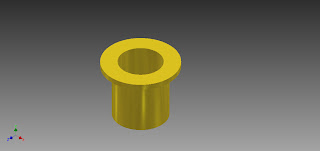Big Brain - The individual student with the most brainstorms listed will earn a bonus achievement.
We all added together our ideas and created this page that helped us keep track of our ideas.
Sketch Ideas - Draw 3 different sketches for possible designs. Label at least 3 key features for each sketch. Describe the feature's functionality so a viewer understands why the called out feature is important.
These are some of our ideas, we thought of making flippers for the swimmers. Also having a wedged shape for the boat. Floaters on the side was a thought that we didn't complete.
Criteria & Constraints - List or reference the specified Criteria and Constraints you're designing for. List at least one implied criteria. List at least three implied constraints.
One of the criteria was the height of the boat sides because we had to find a way to water proof the pieces of cardboard together.
A Constraint was the limit of supplies that we had to create the boat. The 3 foot tall sides made us rethink our approach to having a light weight boat that barely floated on the water. Having all pieces of cardboard must be rapped in duck tape made my team attempt to save our supplies.
Surface area! - Calculate how much surface area you can cover with your given duct tape. How many sf can you cover with one roll? How many can you cover with all your rolls? What % efficiency do you think you can achieve with your overlap?

As you can see there is at least 5 feet of surfice area and there is 3 foot high railing, meaning that the area is 15 feet.
The Fastest - Awarded to the first team to reach the far side (25yds)
My group did get 3rd in this race but it was very close to us being the first team.
The Farthest - Awarded to the team that can travel the furthest (laps)
We were the first team to have the 50yd distance and we did get to the other side of the pool before anyone else did
Feedback - Generate ten items of feedback for your effort (from the design/build process and/or the actual product). Make sure you include at least one item of feedaback in each of our four feedback areas (+, change, ?, !)
Feed Back of Effort and my Thoughts on what would have Helped
The design was good and very nice.
My team should have written more about what we were doing and how we were doing it for next years boat race.
More cardboard.
More duck tape.
Have looked at what the others were doing.
Test our item more.
Made more art on the boat.
Taken more pictures.
Asked for advise from Mr. O.
Allowed conversation with the other team to swap ideas.
(+, change, ?, !)
+) I really liked how my team was the first to finish our boat out of everyone else
change) More cardboard to help support the weight of someone in the Boat.
?)Look at the other teams to realize how flimsy my teams boat was, so I could change our fatal flaw.
!)Have selected groups that were chosen at random by Mr. O.
How Low Did You Go? - How low in the water did your canoe sit (roughly)? Was it suprising how little your boat went down in the water? What is the unit weight of water in pounds? How much did your pilot weigh (roughly)? Use math to help explain the depth that your boat sat in the water.
Our boat was very weak and we were taking in water almost after the second lap in the pool. The boat's sides were 3 feet tall so that means the boat was about 1 foot in the water.
Redesign - If we were to do another Carboard Canoe race next semester, what would you build? Draw from everything you experienced in your class and propose the most competative solution. Include a sketch with key features and dimensions labeled.
If we had another Carboard Canoe Race I would make mine stronger and airy so it would float in the water and have the sides of the boat be protected from water coming into the boat.
(Make Your Own Achievement) - Make an achievement of your own design that you can award yourself for something awesome your team did.
Our Achievement was - Res-erected- Being able to sink your boat them put it back to shape and have it float normally as if it came back from the dead!!!






































